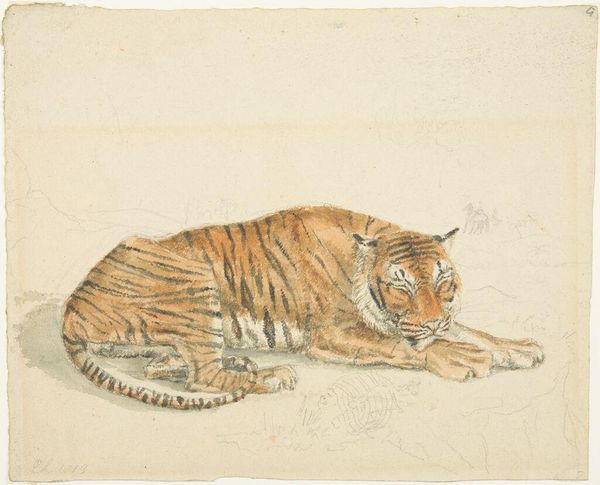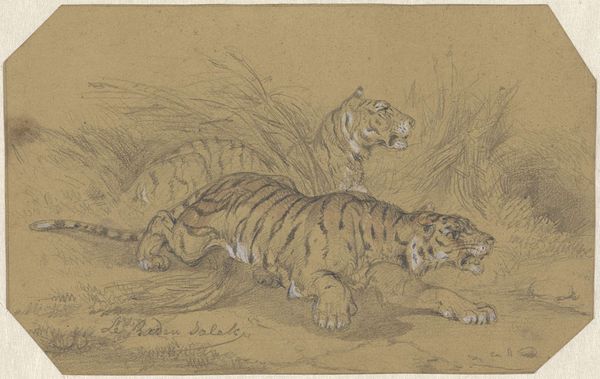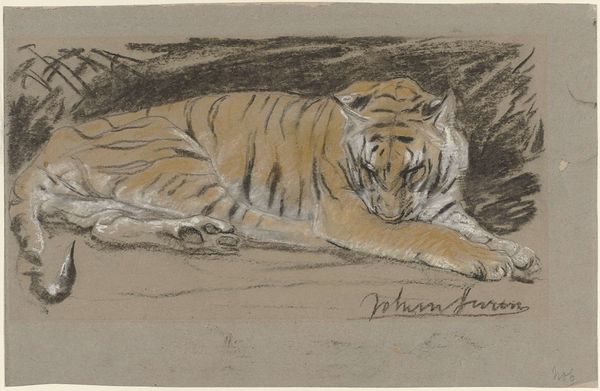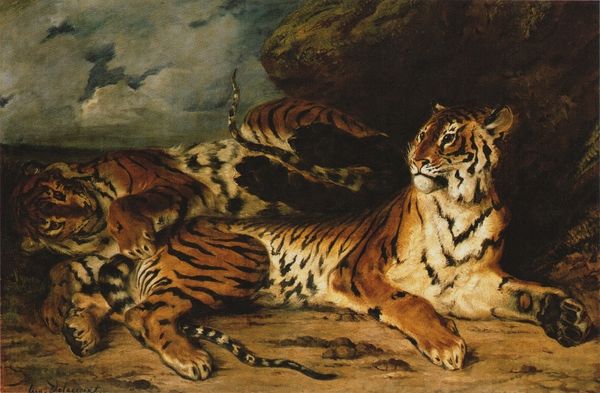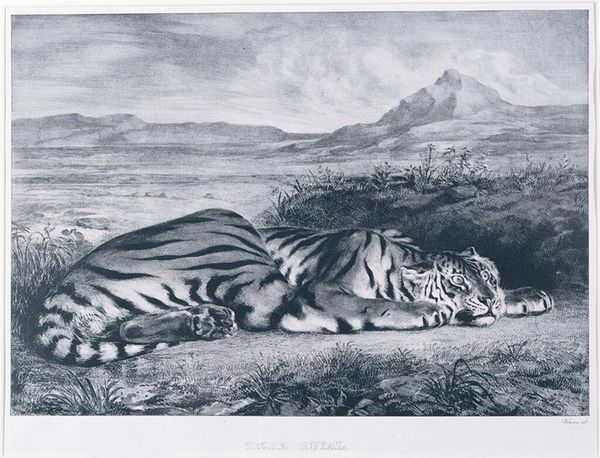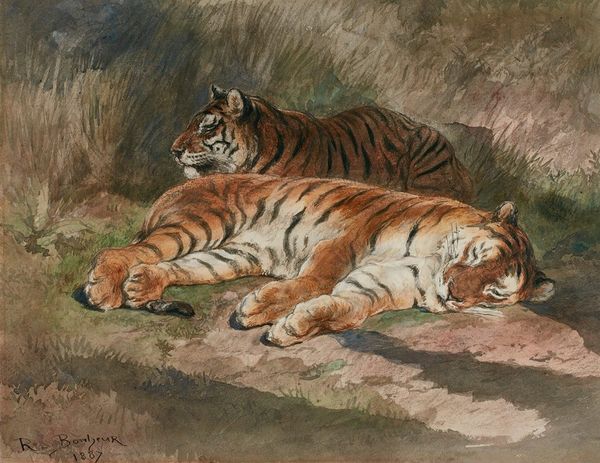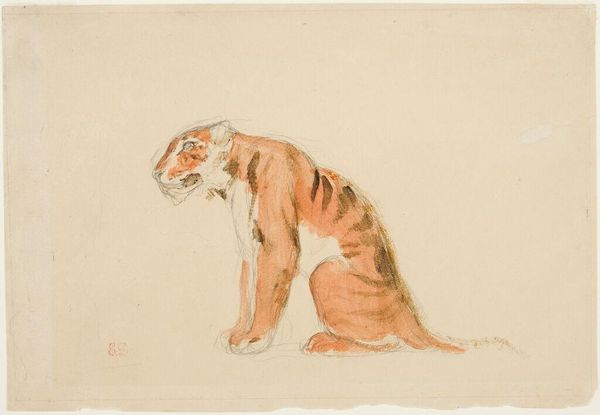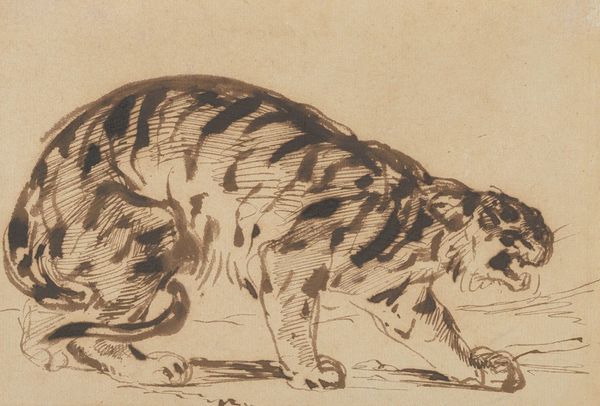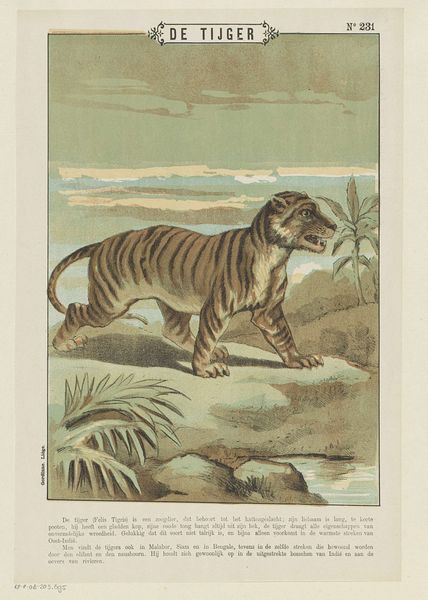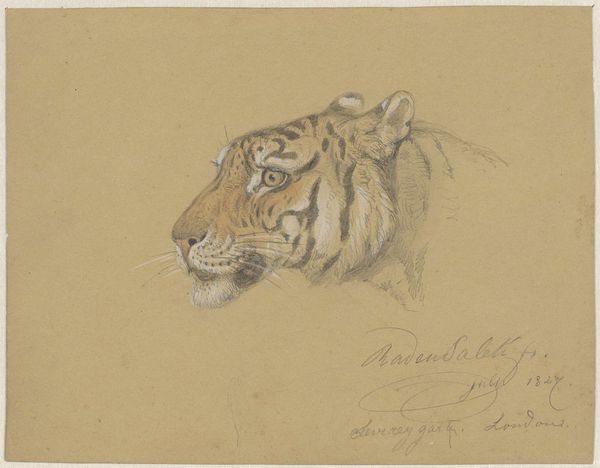
painting, watercolor
#
animal
#
painting
#
landscape
#
figuration
#
oil painting
#
watercolor
#
coloured pencil
#
romanticism
#
watercolor
#
realism
Copyright: Public Domain: Artvee
Curator: Isn’t he magnificent? I’m referring to Eugène Delacroix’s “Royal Tiger,” estimated to have been created somewhere between 1800 and 1863. It's primarily rendered in watercolor, and it's deceptively peaceful for such a powerful beast. Editor: Peaceful is the perfect word. I mean, look at him—almost feline in his domesticity. He looks less like a royal predator and more like a giant, stripy housecat taking a nap. There's a sort of sleepy dignity. Curator: Sleepy dignity - I love that. Though, seeing a tiger portrayed this way challenges the conventional symbols of strength and ferocity we usually associate with it. Consider, though, what the tiger represents culturally - particularly for Delacroix's European audience in the Romantic era. Editor: Aha! The Romantic era… Suddenly, the stage setting of looming snow-capped mountains looming in the back makes total sense! Exoticism, the allure of the untamed, the power of nature… This isn't just a picture of a cat; it’s about longing. Maybe about a wild freedom that bourgeois society denies? The tiger as symbol of repressed desire? Curator: Precisely. Note the contrast, then, between this magnificent creature and the watercolor medium. A ferocious animal rendered with such delicate strokes. The combination adds layers to its inherent symbolism, reflecting both vulnerability and strength. The transparent washes almost lend the tiger's form an ephemeral, dreamlike quality. Editor: A sort of glorious premonition? Or perhaps the animal spirit we carry in our blood? Even his stripes aren’t quite… final. They blend and bleed, as if ready to shift, dissolve, or transform. So very Romantic of Delacroix to leave us with a sense of becoming instead of being. Curator: Yes, beautifully said! Perhaps Delacroix understood that true power isn't about brute force, but the quiet self-assurance this regal beast exudes even in slumber. Editor: And that's something worth meditating on today. That, and the continuing power of symbolic representation to carry a cultural message that's still pertinent hundreds of years later!
Comments
No comments
Be the first to comment and join the conversation on the ultimate creative platform.

